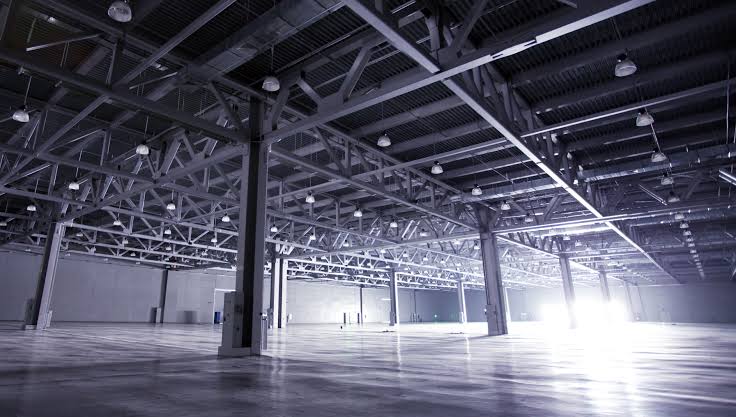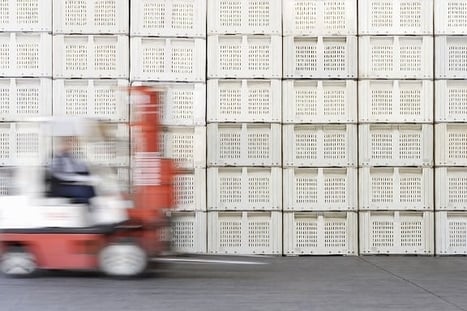6 Ways to Control Dust in Your Facility
Warehouse and Storage facilities are at risk if there is a build up of dust.
Dust buildup is a common challenge in manufacturing facilities, often stemming from multiple sources, including:
- Exhaust emissions from combustion engines
- Fragments from cardboard boxes and wooden pallets
- Outdoor dust entering through open doors and vents
- Residue generated by manufacturing processes
Effectively managing these dust sources is crucial to maintaining a clean and safe environment.
While small amounts of dust pose little to no threat for anyone, a lack of regular maintenance and routine cleaning can be dangerous for employees as well as products. In particular for the fresh produce industry - maintaining the quality and safety of fresh produce in cold storage facilities is paramount for fruit and vegetable producers. However, pests and dust infiltration at doorways can compromise these standards, leading to contamination, spoilage, and financial losses.
The Threat of Pests and Dust in Cold Storage: Pests, including insects and rodents, are attracted to stored produce and can introduce pathogens, leading to contamination and spoilage. Dust accumulation not only affects the cleanliness of the facility but can also harbor microorganisms detrimental to produce quality. Both factors can result in significant product loss and pose health risks to consumers.
As soon as enough dust accumulates, it can:
- Become dangerous for the factory’s workers and equipment
- Present a fire hazard, or
- Become a hygiene factor for food processing & packaging.

How dangerous can dust be for your warehouse?
Negative effects of dust on employees
Dust can pose serious health risks for your factory’s workers. Dust on the floor can cause slipping accidents and regular exposure to dust particles can irritate the skin, eyes, respiratory system, ears, and more.
Even more seriously, if your employees spend at least a few hours in such conditions every day, they are at risk of developing long-term illnesses.
The effects of certain dust particles on some employees may not be known until a few years later. Consider stonemasons: Silicosis is an incurable and often fatal lung disease caused by breathing in dust containing crystalline silica found in manufactured stone. Apprentices and working stonemasons are increasingly difficult to retain as this illness affects the industry.
Negative effects of dust on your equipment
If enough dust manages to build up, it will cause performance issues. Your equipment will work less efficiently, and maintenance costs may begin to rise. The attendant downtime will lead to further losses.
If the factory floor gets too dirty, it becomes harder to move materials across your facility. Internal components will also suffer from dust thanks to clogged air filters, damaged machine parts, or shorts to electric parts.
If dust starts building up on higher levels of your factory, your products will be at constant risk.
Direct risks from dust buildup
One specific and potentially deadly effect of dust can be the combustive dust explosion.
After long periods of accumulation, dust can become dangerous. If it comes in contact with an ignition source, it may explode and put the wellbeing of everyone in the facility in danger.
Such cases are not rare; and in recent years they are becoming even more common. OSHA often improves its standards by requiring good housekeeping habits from factories.
Ways to avoid these potentially serious problems in your warehouse
1) Prevent further influx of dust
Preventing dust from entering your site from outside is the first obvious task to undertake. If you are able to minimise the amount of dust coming into the warehouse, it will be one less headache for you in the long run.
Many strategies used to decrease the dust entering site can also help with maintaining internal warehouse temperatures with temperature control doors, such as airlock zones and automated door systems with the use of products such as Movidor High Speed Rapid Roller Doors and Insulated and automated dock doors and the like. Rapid roller doors are designed to enhance environmental control within cold storage facilities by providing swift and reliable sealing of entry points. Key benefits include:
-
Enhanced Pest Exclusion: By minimizing the time doors remain open, rapid roller doors reduce opportunities for pests to enter storage areas, thereby maintaining a more sterile environment.
-
Dust Control: The quick operation of these doors limits the ingress of dust, preserving the cleanliness of the facility and protecting produce from potential contaminants.
-
Temperature Stability: Maintaining consistent temperatures is crucial for produce longevity. Rapid roller doors help prevent temperature fluctuations by reducing the exchange of air between different areas, thus preserving the quality and extending the shelf life of stored produce.
 2) Regular inspections and cleaning
2) Regular inspections and cleaning
Think of dust inspections and cleaning as being part of your normal maintenance routine. While water will do fine for most surfaces, you may need special detergents for equipment and electronics.
Consider a weekly scheduled mechanical clean and oil, possibly at the end of the working week, to keep equipment clean, oiled and ready for the next week of work. That way you can be sure your equipment is not going to be left dirty until a major failure occurs.
3) Ventilation system
Ventilation control systems are a solution which use extractor fans to create air flows inside your facility; pulling dust particles up through ducts where there is a dust collection bag at the other end of the ducts.
You can turn off the ventilation system at any time and safely remove and dispose of the collected dust.
4) Movement of materials within your facility
The less unnecessary traffic there is in your warehouse, the better. Friction between tires and the floor’s surface can result in the creation of dust. Speed will accelerate this process and fast-moving objects will stir up more dust.
Analyzing the traffic flow within your warehouse space often helps to reduce the amount of distance which goods need to travel to get from one area to another.
For example, goods which are ordered frequently should be placed closer to the dispatch area than those which are rarely ordered. This also means that some areas of your site can be segregated if required. For example, the food processing area can be kept separate from the dispatch area where there is a high traffic volume and vehicle fumes; neither of which should be mixed together with food processing or fresh produce.

5) Reduce exposed surfaces
Keeping everything orderly and storing smaller materials inside containers will help in the fight against dust. It is an efficient solution and easier to go about cleaning the top of a container than individual goods stacked on a shelf.
6) Segregating areas which are prone to dust
A neat solution to containing dust and preventing it from spreading is the use of PVC Stripdoors and partitioning solutions. A high speed rapid roller door can also be used to control entry to other areas of the facility, with easy access when needed. If one area is particularly prone to attracting dust (being near the entrance for example), there may not need to be a reason for the entire site to be open to the elements.
The dust will remain in a controlled environment, so you can quickly and easily remove it later. Such curtain walls will help in securing a healthy working environment with high standards.
Get more advice on managing dust in your warehouse
For more information about managing dust in your facility, get in touch with the expert Remax team online or call us on 1800 010 221.





